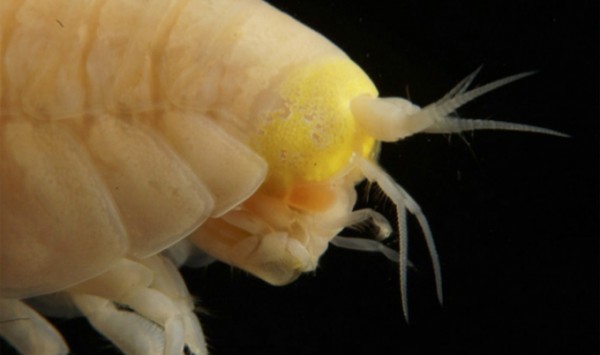By Ana Verayo, | February 18, 2017

The head of the voracious scavenging amphipod Hirondellea gigas. (Alan Jamieson, Newcastle University)
One of the most remote places in the world is the Mariana Trench which is located deep in the ocean's trenches in the western Pacific Ocean. Apparently, it is also one of the most polluted, about 50 times more toxic than the most polluted river system in China, according to an alarming new study.
Like Us on Facebook
In this new study, scientists and researchers from Newcastle University, Scotland reveal that even the most difficult to reach places in the ocean are not safe from pollution. This also debunks the belief that deep-sea ecosystems are mostly protected from destructive human activity.
This alarming discovery was made upon exploring two of the deepest marine trenches in the world, the Mariana Trench and the Kermadec Trench located in the north eastern part of New Zealand. Both trenches can go as deep as six to 11 kilometers below the ocean's surface.
Using a remotely operated deep-sea vehicle, the researchers were able to collect samples by using traps to bait tiny crustaceans. New findings revealed that the marine animals were contaminated by two kinds of persistent organic pollutants.
Persistent organic pollutants can include pesticides and industrial chemicals which are polychlorinated biphenyls and polybrominated diphenyl ethers. They are both found in coolants and lubricants in electrical equipment and flame retardant chemicals.
These chemical pollutants are so toxic that some of them were banned in the 1970s and have been linked to higher risk of cancer. These chemicals can also take very long time to break down and can travel via soil, water and air that can very well penetrate into ecosystems and the food web. More importantly, these pollutants can alter hormonal and reproductive systems including the immune system of organisms, animals, and humans.
These are mostly man-made chemicals that are mainly seen is pesticides and now, seen in all the samples from the animals taken in both ocean trenches. According to the lead author of the study, Alan Jamieson of Newcastle University, the highest levels of chemical pollutants were recorded in crustacean samples from the Mariana Trench. Jamieson reveals that these are 50 percent higher than crabs in the most polluted river in China, the Liaohe River.
Researchers suggest that since the Mariana trench is close the industrialized Northwest Pacific region and the Great Pacific Garbage Patch, these chemicals seeped into the oceans and sank into the floor. This in turn transported the chemical pollutants deep into the trench when the garbage was broken into pieces and sank.
This new study suggests the powerful link of surface pollution and deep sea ecosystems and calls for governments, environmental agencies and organizations should be able to better manage and monitor these pristine environments. This new study was published in the journal, Nature Ecology and Evolution.
-
Use of Coronavirus Pandemic Drones Raises Privacy Concerns: Drones Spread Fear, Local Officials Say

-
Coronavirus Hampers The Delivery Of Lockheed Martin F-35 Stealth Fighters For 2020

-
Instagram Speeds Up Plans to Add Account Memorialization Feature Due to COVID-19 Deaths

-
NASA: Perseverance Plans to Bring 'Mars Rock' to Earth in 2031

-
600 Dead And 3,000 In The Hospital as Iranians Believed Drinking High-Concentrations of Alcohol Can Cure The Coronavirus

-
600 Dead And 3,000 In The Hospital as Iranians Believed Drinking High-Concentrations of Alcohol Can Cure The Coronavirus

-
COVID-19: Doctors, Nurses Use Virtual Reality to Learn New Skills in Treating Coronavirus Patients







